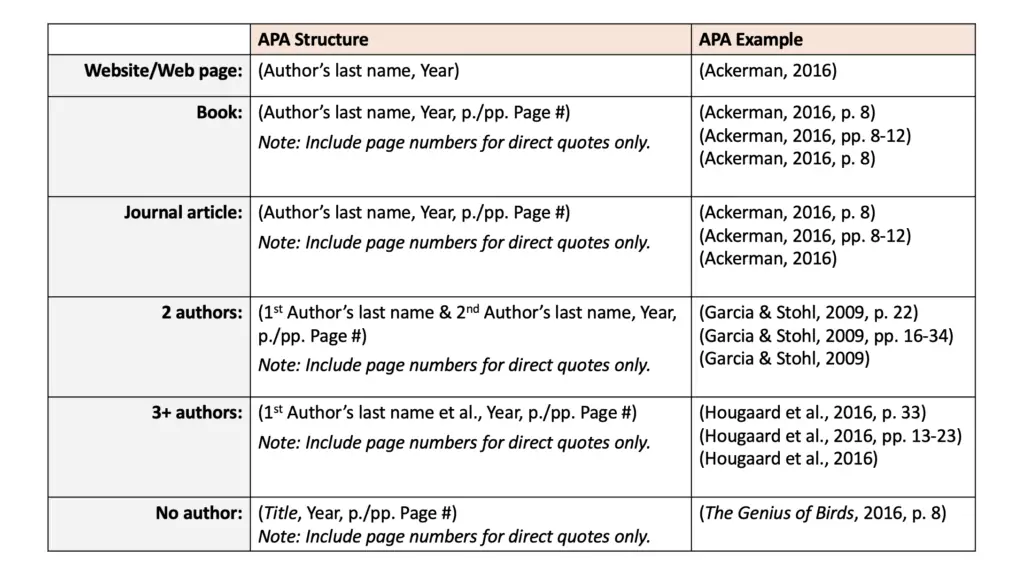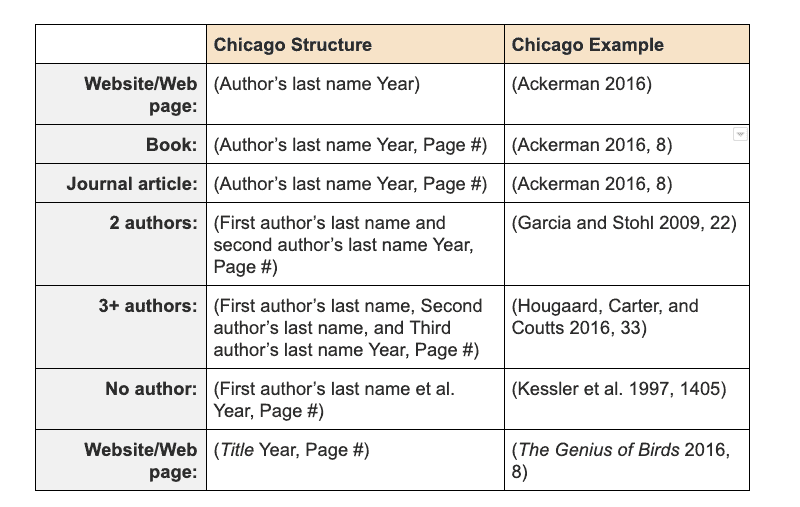What’s a Parenthetical Citation vs. a Footnote?
Parenthetical citations and footnotes are two different types of citations used in the body of research projects. Their goal is to direct readers to information about the sources used in your research project. Parenthetical citations are often used in MLA format, APA format, and many other styles. Footnotes are often used in Chicago format citations and other styles as well. If you’re unsure what format to use for your research paper, ask your instructor.
Here’s a table of contents for this guide:
Comparison Chart
Here’s a quick comparison chart:
| Parenthetical Citations | Footnotes |
| Used in MLA, APA, author-date, etc. | Used in notes and bibliography style of Chicago |
| Used in the author-date style of Chicago | Used in notes and bibliography style of Chicago |
| Found in the body of the research paper | Found in the body of the research paper |
| Used to cite a direct line of text or paraphrase | Used to cite a direct line of text or paraphrase |
| Author-date form of citation within the body of the research paper | Found at the bottom of the page where the work is cited within the body of the research paper |
| Placed directly after the quote or paraphrase within the body of the research paper
Example: Contrary to what most people think, “…evolution isn’t about advancement; it’s about survival” (Ackerman, 2016, p. 8). |
Citation noted by a number, with a brief citation in the footnote
Example: Contrary to what most people think, “…evolution isn’t about advancement; it’s about survival.”¹1. Ackerman, Genius of Birds, 8. |
| Full citation found in Works Cited page | Full citation found in Works Cited page |
Parenthetical Citations
Let’s first discuss parenthetical citations, which are used in MLA, APA, and many other formats. You use parenthetical citations in a research project when you take a line of text directly from another source and place it in your own project. You also use parenthetical citations in a research project when you use another author’s idea in your research project but instead of taking it directly, you rephrase or paraphrase the content in your own words.
Let’s look at a few parenthetical citation examples:
- Quote: “…evolution isn’t about advancement; it’s about survival”
- Source type: Book
- Page number: 8
- Author: Ackerman, Jennifer
- Title: The Genius of Birds
- Publisher: Penguin
- Year published: 2016
Parenthetical examples
Here are examples of parenthetical citations based on the information above:
Contrary to what most people think, “…evolution isn’t about advancement; it’s about survival” (Ackerman 8).
APA format:
Contrary to what most people think, “…evolution isn’t about advancement; it’s about survival” (Ackerman, 2016, p. 8).
Chicago author-date format:
Contrary to what most people think, “…evolution isn’t about advancement; it’s about survival” (Ackerman 2016, 8).
Place parenthetical citations directly after the quote or paraphrase to provide the reader with a quick glimpse, or idea, as to where the borrowed information originated. When relevant—for example, in print materials such as books or magazines—parenthetical citations include the last name of the original author and the page number (or other locating information) where the information was found in parentheses.
If you cite the author’s name in your project’s text (a narrative citation or citation in prose), only include the page number in parentheses.
Ackerman goes on to state that “…evolution isn’t about advancement; it’s about survival” (8).
APA format:
Ackerman (2016) goes on to state that “…evolution isn’t about advancement; it’s about survival” (p. 8).
Chicago author-date format:
Ackerman goes on to state that “…evolution isn’t about advancement; it’s about survival” (2016, 8).
As stated above, the goal of a parenthetical citation is to provide the reader with a quick glimpse, or idea, as to where the borrowed information originated. To find more information about the source, such as the title of the source and the date it was published, readers can go to the last page of a research project, called the “Works Cited” page or “Bibliography,” to find the full citation.
The full citation at the back of the project would look like this:
Ackerman, Jennifer. The Genius of Birds. Penguin, 2016.
APA format:
Ackerman, Jennifer. (2016). The genius of birds. Penguin.
Chicago author-date format:
Jennifer Ackerman. The Genius of Birds (Penguin, 2016).
Parenthetical quick guide
MLA parenthetical citations
APA parenthetical citations
Chicago parenthetical citations
Footnotes
Let’s now discuss footnotes. Footnote citations are also found in the body of a research project, but footnotes look different from parenthetical citations and are used in Chicago format and other styles. Their purpose is the same as parenthetical citations in that footnotes are used anytime a direct line of text or paraphrase is added into a research project. They’re also included anytime the writer wants to direct the reader to a source that might be briefly mentioned in the research paper.
The biggest difference between footnotes and parenthetical citations is that brief information about the source isn’t found directly after the borrowed text or paraphrase. Instead, a small bit of information, which includes the last name of the author and the page number, is found at the bottom of the page. Numbers are placed next to the borrowed information to help direct readers to the footnote.
Here is an example of a footnote in Chicago format:
Contrary to what most people think, “…evolution isn’t about advancement; it’s about survival.”¹
Notice the small, superscript number 1 next to the quote above. At the bottom of the page, the reader would find the number 1, and next to it they’ll see the footnote.
1. Ackerman, Genius of Birds, 8.
At the end of the research project, readers can find the full citation in the endnote, which would look like this:
Ackerman, Jennifer. The Genius of Birds. New York: Penguin Books, 2016.
While parenthetical citations and footnotes have the same purpose, they are structured and formatted differently. Remember, if you’re unsure of which type of citation to include in your project, ask your instructor for help.
Published October 31, 2011. Updated June 8, 2021.


